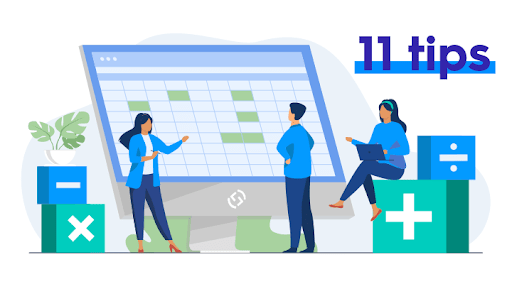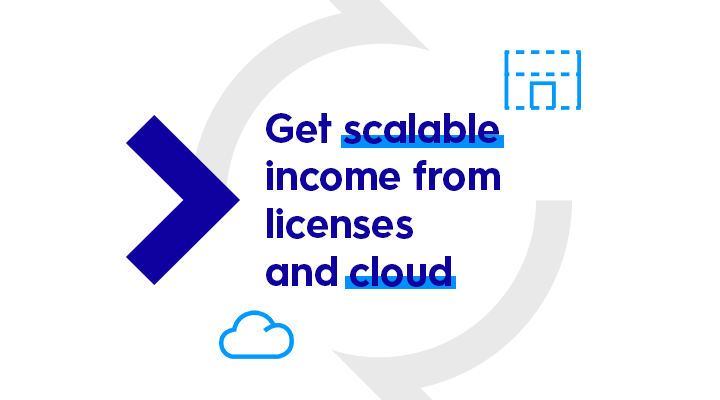11 Tips for E-commerce Software Houses in COVID19 Period
Written by
Editorial TeamPublished on

Globally the COVID-19 pandemic has had a significant impact on retail stores, and in many countries these businesses are facing lockdowns.
As a result of social distancing people have also reduced their visits to open retail stores. On the whole, the global retail market has come to a standstill, or at least significantly slowed down.
Some product categories like sports, fashion, and hobbies have dropped dramatically. At the same time, most of the online stores are experiencing dramatic growth (based on a Shopsys study indicating 118% year-to-year growth on average).
At first glance, this might provoke optimism about e-commerce agencies. However the situation is very complex, and there are a number of variables at play. Retailers are growing online but the sales of physical brick and mortar stores has fallen dramatically.
Total consumption has dropped significantly and the supply chain is facing late payments. A major consequence of this is the threat it poses for software houses.
However, every crisis is also an opportunity and at Shopsys we prefer to believe that luck favors the bold.
Three prominent software houses, founders, and partners, including Petr Svoboda (Shopsys), Tomas Karwatka (Divante), and Lukas Kahwe Smith (Liip) have compiled a list of tips for other ecommerce agencies. Take into account that every market and company is individual so feel free to individualize them.

1. Communicate Clearly
Great leaders are those who act fast and are very open with their forecast of the situation, the reasons that led to their assumptions, and steps that need to be taken.
Shopsys shifted their approach to keeping all their employees in the loop about important changes or updates on a weekly basis, mostly via short all-hands meetings.
Liip confirms that quick responses to an important situation is crucial and builds trust among employees and the company. Remember, clear communication reinforces the company’s culture.
We also recommend maintaining all planned and common activities, like coffee breaks, new employees intros, brainstorming sessions, and even after-work drinks as a way to instill normalcy and routine.
The one major difference, of course, is shifting these activities so that they can be achieved remotely via conference calls.
Your clients need to be informed as well. If some actions affect them (eg. pre-payments, re-allocation of resources) inform them regularly, preferably via 1-1 video/phone calls that partially substitute personal meetings.
The more honest your communication is the better feedback you can expect.
2. Help Your Clients
Some of your clients probably experience huge growth, some are facing a drop in sales from physical stores, and some aren’t experiencing any significant change. All of them need your help. Your clients are probably overwhelmed with day-to-day problems presented by the pandemic, and your role is to provide creative solutions, support, and ideas.
Your customer will appreciate your time, energy, and ideas. The side bonus is the relationship you make together. You probably know from your personal experience that your best friends are those who supported you in the toughest times.
Shopsys organizes free 1-1 COVID calls with their clients covering market trends, changes in consumer behavior, suppliers and product portfolio, revenues, costs, cash-flow, marketing, and management and leadership. Feel free to use the pitch deck template.

For example, in the first days of the lock-down Divante focused on helping their people and clients. They researched how Chinese retailers from different industries dealt with business challenges during the COVID-19 outbreak and published a series of articles on their blog.
Divante changed the way they offered their services in order to focus more on remote design-sprints that could solve new business problems that occurred. Divante also started a new project TechToTheRescue.org.
The initiative is connecting IT companies with NGOs that may need additional support.
3. Guard The Cash-flow
In every recession, the lack of cash is the most common reason why companies go bankrupt. The optimism about the growth of online sales is the main enemy here. Even purely online-based stores are part of a supra-connected supply chain. Be aware that the economy is slowing down.
The growth of online sales is directly correlated to what happens in the physical retail world. If your clients are invested or occupy a presence in the physical retail chain they will likely face some problems with cash flow in the near future.
The lack of available funds will be transferred to their suppliers, of which your software house is a part. Since the majority of your costs are the salaries of your employees, this can knock you down really quickly.
Petr suggests to monitor daily how your clients perform (Shopsys uses dashboards with clients’ Y2Y comparison of total sales and traffic from tracking PPC conversions) and call them on a weekly basis to ensure you won’t run into problematic situations. Again, a good relationship plays a key role here.
If you have some clients with poor payment history, consider working only in a pre-paid mode. When you indicate a problem with their solvency, immediately talk about it.
A consequence of this may be re-allocating some of your employees to a different project as soon as possible.
4. Work Under Long-term Contract Or Prepaid
If you haven’t already done it, allocate your employees on a long-term basis. It significantly helps with resource planning, performance efficiency, and cash-flow. Long-term contracts with regular monthly payments help your clients as well.
The budget is set in advance and the responsible person on the client-side doesn’t need to approve every task. For any ad-hoc inquiries for customizations or consultations, you can ask for payment in advance.
5. Try To Reduce Costs
Cash-flow forecast for upcoming years should count with temporary fallen income. Reducing some costs can help you to overcome it easily. Consider temporary suspension of some activities like events, language courses, coaching, or teambuilding.
Your primary focus should be on helping your clients and working on their projects.
If you need to reduce wage costs think about the possibility of reducing working times (e.g. to 4 day work weeks for 80% salary). Due to quarantine and working from home, living costs have also dropped.
Additionally, many employees are willing to make compromises here (legally, the agreement is compulsory), and its definitely a better option than resorting to mass layoffs. You can easily and quickly switch back to the full-time mode when business starts to pick up again.
Another solution to reducing costs could be tech outsourcing – hiring developers for shorter assignments or on a contract-based basis.
Be aware that layoffs don’t help with the cash-flow since most countries have employee protection laws with severance pay (in Europe 3-5 monthly salaries on average). Dismissing people (i.e. layoffs) should always be considered as a long-term strategy.
6. Be Self-organized
The main benefits of self-organized teams and companies are speed, agility, quality/customer focus, a true team feeling, and employee satisfaction. Such self-organization will pay off even in crisis situations. Use video conferencing solutions to stay in touch with your teammates or employees.
Liip uses holacracy (one of the best-known forms of self-organisation) since 2016, however the past three weeks proved that self-organisation also works during a crisis.
After all, a crisis is simply a completely new market situation to which the company must adapt, and that is exactly what this system was made for. Crisis management there follows a radically different organisational structure to traditional organisations and their crisis unit (read Liip’s blogpost).
7. Become An A-Level Company
The upcoming recession will change the recruitment market. While recruiting A-level employees can be very expensive – if not impossible or unfeasible given your industry – the following months will make it much easier and economically reasonable. Therefore, this will be a critical time to start fishing for new and rising talent.
If you plan some layoffs, this is also the time to start considering letting go of ‘C-level’ players who may not be benefiting your company, and be sure to offer them a generous exit severance payment.
8. Get Scalable Income From Licenses and Cloud
If you haven’t started working on a scalable income stream, do it now. The easiest option is to get your portion of e-commerce platform license fees (25-35% on average) or licensing your own software or white-labeled platform.
Some sources of revenue can be built on commissions from 3rd party services like payment providers, analytics tools, mass mailing tools, PIM software, etc. Your agency can also provide cloud hosting services.

One of possible license and cloud hosting fees calculation methods is to offer pricing based on Gross Merchandise Value. Clients easily understand it and consider it as a success-shared model between their performance and your participation.
9. Rethink Your Platform Strategy
You have had many historical reasons to build clients’ projects on your own platform or on top of earlier vendor’s platforms. Many things might have changed in recent years. Some software development agencies started with smaller and easier projects and moved to specially tailored and integrated solutions. Some moved from wide custom development to configuration and extensions of out-of-the-box SaaS solutions.
Use this crisis as an opportunity to rethink your short-term and long-term business strategy and pick the right vendor partner. There are many great solutions on both sides of the market. Shopify, Bigcommerce, Shopware, as well as Spryker and Shopsys make up some of the bigger players.
You can also review the strong trend of headless commerce, Progressive Web Apps, JS storefronts (like Divante’s Vue Storefront)
If you have provided your own solution, think of using a white-labeled partner’s platform to save costs and provide modern technology (Shopsys provides it).
10. Deliver Fast Time-To-Market Projects
For sellers with no online channel or with an obsolete one, speed will be the highest priority now. Be prepared for a crunch when it comes to providing complex help for your prospects quickly and efficiently.
For some sellers, using a SaaS e-commerce solution will be the best choice. However, even when you work with larger sellers with a wide variety of customization demands, be prepared with some instant enterprise e-commerce solutions. Launch the modern MVP in days and improve it on a regular basis.
Agile contracts, agile budgeting, Scrum methodology experience, and competent product owners are crucial components when it comes to delivering products on a deadline.
11. Be Prepared For The Omnichannel World
We predict that the coronavirus pandemic will accelerate the digitalization of the world at all levels, from trade and education to government and work habits.
We firmly believe that the effects of this pandemic will fundamentally alter customers’ buying habits, and even after this has passed customers will prefer online shopping significantly more than they did before.

The online and offline world will be more interconnected. Integration of brick and mortar stores, online stores, mobile apps, pick-up points, showrooms or marketplaces will bring considerable challenges. For seamless customer experience, companies will have to rework a large number of internal processes and technologies.
Your role here is to provide the right omnichannel technology and guide your customers in their transformation.


